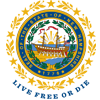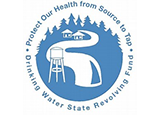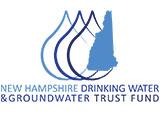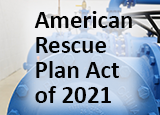PFAS Remediation Grant and Loan Fund
Funding for public water systems and wastewater facilities to address PFAS maximum contaminant level violations.
The Per- and Polyfluoroalkyl Substances Remediation Grant and Loan Fund (PFAS RLF), established under RSA 485-H, provides low-interest grants and loans for publicly and privately owned community water systems, non-profit non-transient public water systems, and municipalities to address exceedances of per- and polyfluoroalkyl substances (PFAS) standards in drinking water for remediation efforts initiated after September 30, 2019.
An exceedance is a PFAS result greater than one or more of NHDES’ Ambient Groundwater Quality Standards (AGQS)/Maximum Contaminant Levels (MCLs):
- Perfluorooctanoic acid (PFOA) – 12 ng/L
- Perfluorooctane sulfonic acid (PFOS) – 15 ng/L
- Perfluorohexane sulfonic acid (PFHxS) – 18 ng/L
- Perfluorononanoic acid (PFNA) – 11 ng/L
The primary types of projects funded by the program include installation of treatment, installation of new wells, or interconnections.
Benefits of the PFAS RLF
- Available to municipalities.
- Lower than market interest rates.
- Current interest rate is 3.84% (until August 1, 2025).
- No pre-payment penalty.
- Contingent reimbursement.
- 10% principal forgiveness.
- Interest during construction is 1% until project completion.
- Repayment begins 1 year after substantial completion (6 months for privately owned systems).
Grant and Loan Process
Loan approval: Upon receipt of the final application materials, the PFAS RLF Program will develop grant and loan documents for approval by Governor and Council. Once the documents are approved and the environmental review is complete, project construction can begin and funds can be disbursed.
Disbursements: Funds can be disbursed, no more than monthly, upon receipt of a disbursement request, provided all required documentation is received. Non-construction project related costs (i.e. design preparation and bid solicitation) may be eligible for reimbursement once the grant and/or loan agreement are in place. During construction, interest will be calculated at 1% on funds disbursed for loans. Construction interest may be paid at first repayment or it may be capitalized over the life of the loan (as long as adequate loan funds are available).
Design and construction: PFAS RLF Fund projects require the preparation, submittal and approval of engineering design plans and competitive bid process. After bids are solicited and a contractor is selected (lowest responsible bidder), NHDES issues an Authorization to Award and project construction may commence. Bid specification (front-end) templates can be found at the link above. Bid specification front-end documents are provided by NHDES.
Project signs: Projects are required to display signage at construction sites to increase transparency and make the effectiveness of government efforts to rebuild the country’s infrastructure visible to the public. Individual funding sources will have different signage requirements. Refer to your funding approval letter and confirm with your project manager which sign guidance to use.
Project certification: NHDES requires various certifications to document project completion such as Asset Management Plans, Substantial Completion and Final Completion certifications.
The PFAS RLF Program accepts eligibility requests year round. Each eligibility request is reviewed in the order in which the requests were submitted.
- Submit an Eligibility Request
In order to be considered for funding, an eligibility request is required. PFAS RLF staff are available to discuss your project(s) or any other questions you may have. - Final Application
Eligible applicants selected for funding are required to submit a final application by the agreed-to deadline for filing.
Resources
- Env-Dw 1400
- Drinking Water Infrastructure Final Application Checklist
- Environmental Review
- Front End Documents
- Federal Flood Risk Management Standard for SRF Projects
- Common Grants and Loans for NH Public Water Systems
- DWGB 7-4: Professional Engineering Services for New Hampshire Public Water Systems
Final Application for PFAS RLF Projects
The Final Application Checklist for Drinking Water Infrastructure Projects outlines the required forms and documentation associated with securing a PFAS RLF loan.
Asset Management and Business Plans
Asset Management (AM) is a systematic process of operating, maintaining, upgrading and disposing of assets cost-effectively while maintaining a level of service that is acceptable to the customers. An asset management plan is the key to successfully communicating with management and customers about the system’s needs and to identify the best financial strategy to address those needs. The PFAS RLF Program requires that an asset management maintenance and renewal plan (AMRP) be developed for the funded asset(s). A system-wide AM Plan is not required by the PFAS RLF program although it is strongly encouraged. The cost to develop an AM Program for the entire water system, including any studies, software, training, or the use of consultants, is an eligible expense under the PFAS RLF program.
At a minimum, the PFAS RLF program AM Plan should consist of the following components:
- Commitment to an asset management, financing and implementation strategy.
- Inventory of asset(s).
Systems that already have an AM Plan/Program in place simply need to provide a justification that their program meets the minimum requirements and proof of the incorporation of the new asset(s) into their existing AM Program. A business plan is a documented multifaceted assessment of the present and future managerial and financial capacity for small water systems and includes an inventory of water system assets, including an asset condition assessment that are the basis of ongoing Asset Management (AM) planning. Learn more about the Asset Management Program.
Disadvantaged Community System Assistance Program
A disadvantaged community or system includes financially disadvantaged water systems – Non-transient public water system or community that serves residents whose median household income (MHI) is less than the statewide MHI based on the most recent census data and/or income survey.
If an applicant for PFAS RLF assistance meets the definition of “disadvantaged” and if the water rate exceeds the statewide affordability criteria, it may be eligible for subsidies from the Disadvantaged Community System Assistance Program. Subsidies will be available in the form of principal forgiveness.
The eligibility for subsidy is determined by using an Affordability Index, which is calculated by dividing the project user rate by the community or community system’s MHI. Loans, rates and terms for this program will be the same as those for standard project loans. Disadvantaged systems may be eligible for a 30-year loan term.







